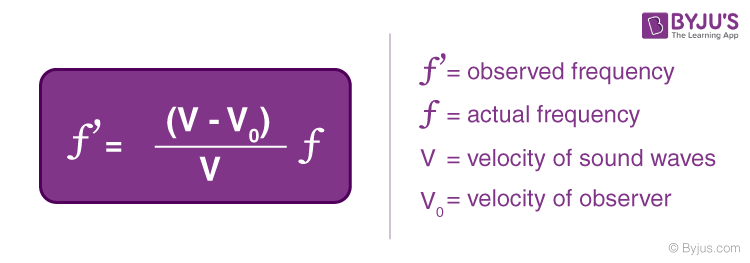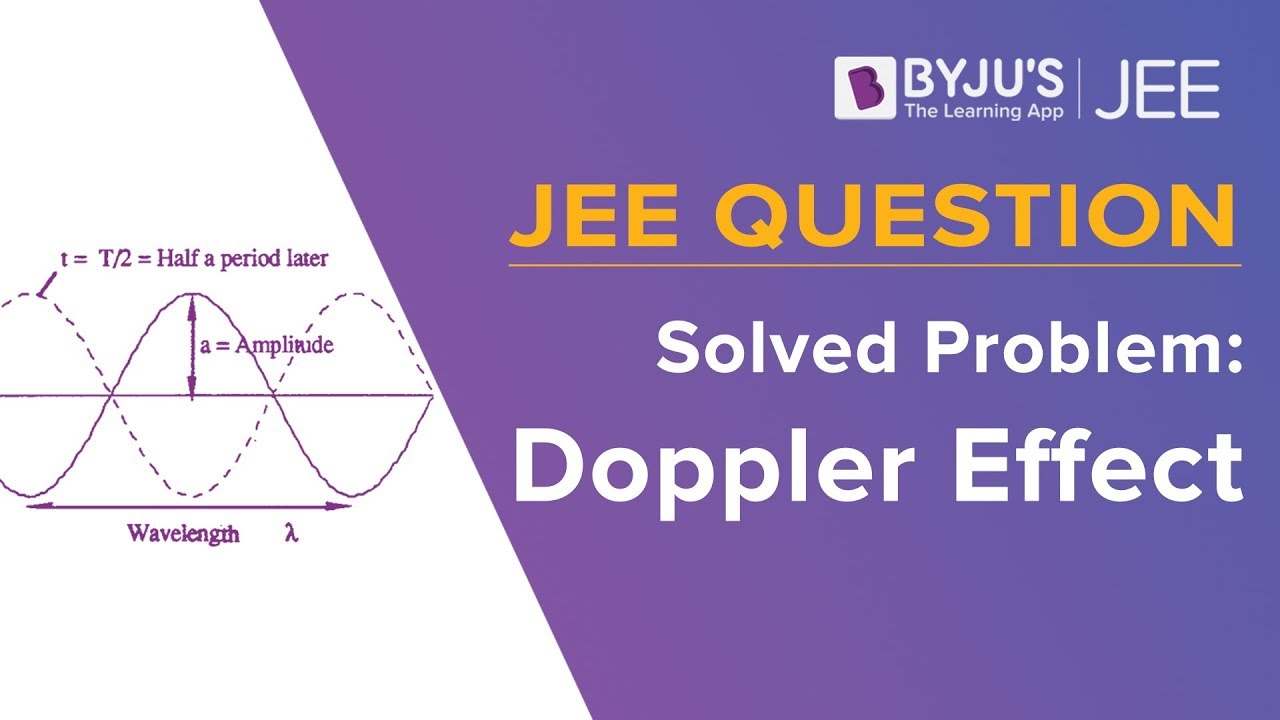Doppler effect or Doppler shift is a phenomenon that is observed whenever the source of waves is moving with respect to an observer. For example, an ambulance crossing you with its siren blaring is a common physical demonstration of the Doppler Effect. In this article, let us understand the intricacies of the Doppler effect in detail.
| Table of Contents |
Doppler Effect Explained
Doppler effect is an important phenomenon in various scientific disciplines, including planetary science. The Doppler effect or the Doppler shift describes the changes in the frequency of any sound or light wave produced by a moving source with respect to an observer.

Doppler effect in physics is defined as the increase (or decrease) in the frequency of sound, light, or other waves as the source and observer move towards (or away from) each other.
Waves emitted by a source travelling towards an observer get compressed. In contrast, waves emitted by a source travelling away from an observer get stretched out. Christian Johann Doppler first proposed the Doppler Effect (Doppler Shift) in 1842.
Doppler Effect Examples
Let us imagine the following scenario:
Case 1: Two people A and B, are standing on the road, as shown below in the picture.

Which person hears the sound of the revving engine with a greater magnitude?
Person A hears the sound of the revving engine with a greater magnitude than person B. Person B, standing behind the car, receives fewer waves per second (because they’re spread out), resulting in a low-pitched sound. But, person A who is in front of the car, receives more of those soundwave ripples per second. As a result, the frequency of the waves is higher, which means the sound has a higher pitch.
Case 2: Now let us consider the following situations:
Situation 1: How is the pattern of waves formed when you suddenly jump into a pond?
Situation 2: How is the pattern of waves formed when you are walking in a pond?
The image given below highlights the difference between wave patterns in both situations.

The difference in the wave pattern is due to the source’s movement in the second case. This is what the Doppler effect is. In the Doppler effect, the frequency received by the observer is higher during the approach, identical when the relative positions are the same, and keeps lowering on the recession of the source.
In this video let’s see how relative motion between the source and the observer changes the frequency of sound waves giving rise to the Doppler Effect.

| Related Reading: |
Doppler Effect Formula
Doppler effect is the apparent change in the frequency of waves due to the relative motion between the source of the sound and the observer. We can deduce the apparent frequency in the Doppler effect using the following equation:

While there is only one Doppler effect equation, the above equation changes in different situations depending on the velocities of the observer or the source of the sound. Let us see below how we can use the equation of the Doppler effect in different situations.
(a) Source Moving Towards the Observer at Rest
In this case, the observer’s velocity is zero, so V0 is equal to zero. Substituting this into the Doppler effect equation above, we get the equation of the Doppler effect when a source is moving towards an observer at rest as:

(b) Source Moving Away from the Observer at Rest
Since the velocity of the observer is zero, we can eliminate V0 from the equation. But this time, the source moves away from the observer, so its velocity is negative to indicate the direction. Hence, the equation now becomes as follows:

(c) Observer Moving Towards a Stationary Source
In this case, vs will equal to zero, hence we get the following equation:

(d)Observer Moving Away from a Stationary Source
Since the observer is moving away, the velocity of the observer becomes negative. So, instead of adding V0, we now subtract, since V0 is negative.

Doppler Effect Solved Problems
Two trains A and B are moving toward each other at a speed of 432 km/h. If the frequency of the whistle emitted by A is 800 Hz, then what is the apparent frequency of the whistle heard by the passenger sitting in train B. (The velocity of sound in air is 360 m/s).
Solution:
The source and the observer are moving toward each other, hence.
Converting 432 km/h into m/s we get 120 m/s.
Substituting the values in the equation, we get
| Apparent frequency f = 1600 Hz |
2. A bike rider approaching a vertical wall observes that the frequency of his bike horn changes from 440 Hz to 480 Hz when it gets reflected from the wall. Find the speed of the bike if the speed of sound is 330 m/s.
Solution:
Let the bike approach the wall with speed u.
Then the apparent frequency received by the wall can be calculated as
For the reflected wave,
Substituting (1) in (2), we get
Simplifying, we get
Substituting the values in the equation, we get
| The speed of the bike is 14.3 m/s |
Let us see more solved examples in the video given below

Uses of Doppler Effect
Many people mistake the Doppler effect to be applicable only for sound waves. It works with all types of waves including light. Below, we have listed a few applications of the doppler effect:
- Sirens
- Radar
- Astronomy
- Medical Imaging
- Blood Flow Measurement
- Satellite Communication
- Vibration Measurement
- Developmental Biology
- Audio
- Velocity Profile Measurement
Doppler Effect Limitations
- Doppler Effect is applicable only when the velocities of the source of the sound and the observer are much less than the velocity of sound.
- The motion of both source and the observer should be along the same straight line.
Doppler Effect In Light
Doppler effect of light can be described as the apparent change in the frequency of the light observed by the observer due to relative motion between the source of light and the observer.
For sound waves, however, the equations for the Doppler shift differ markedly depending on whether it is the source, the observer, or the air, which is moving. Light requires no medium, and the Doppler shift for light travelling in a vacuum depends only on the relative speed of the observer and source.
Red Shift and Blue Shift

- When the light source moves away from the observer, the frequency received by the observer will be less than the frequency transmitted by the source. This causes a shift towards the red end of the visible light spectrum. Astronomers call it the redshift.
- When the light source moves towards the observer, the frequency received by the observer will be greater than the frequency transmitted by the source. This causes a shift towards the high-frequency end of the visible light spectrum. Astronomers call it the blue shift.
The below video provides an in-depth analysis of Doppler Effect for JEE Advanced 2023

Frequently Asked Questions – FAQs
What is the Doppler Effect in Physics?
Who discovered the Doppler Effect?
Can Doppler effect be observed in both longitudinal and transverse waves?
How can the Doppler Effect be applied to everyday life?
A few daily life examples of the Doppler effect are: a) When you stand beside a police radar. b) The Doppler effect is used by meteorologists to track storms. c) Doctors use the Doppler Effect in hospitals to diagnose heart problems. d) Traffic police make use of the doppler effect a radar gun to check the speed of the oncoming vehicles.
Why is the Doppler Effect used in hospitals?
How does the Doppler Effect prove that the universe is expanding?
Stay tuned to BYJU’S and Fall in Love with Learning!

Comments